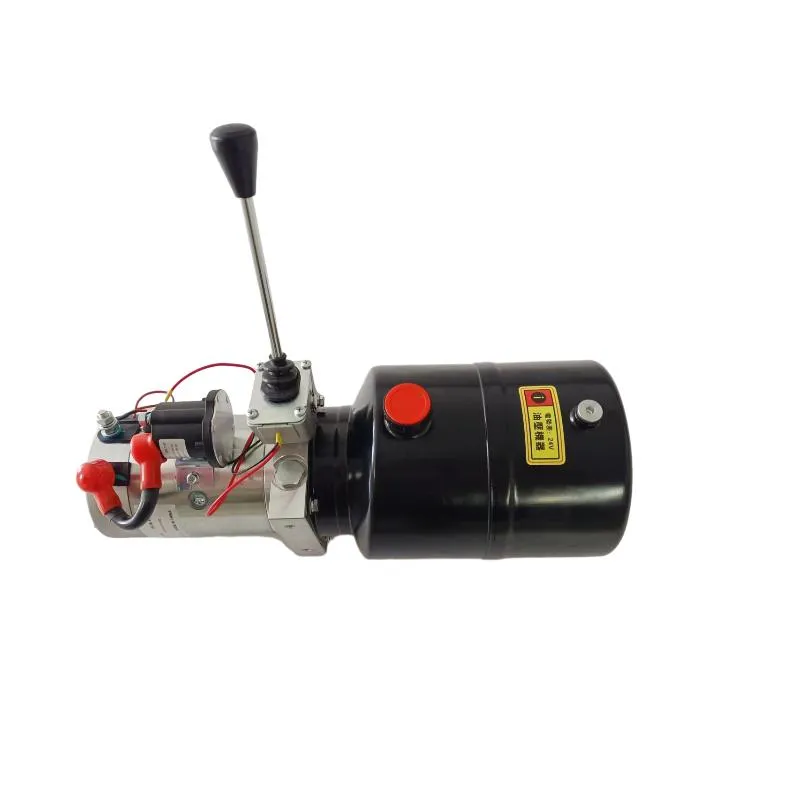Oct . 22, 2024 00:47 Back to list
Hydraulic Cylinders for Cranes Enhancing Performance and Efficiency in Heavy Lifting Operations
Exploring the Advantages and Applications of Crane Hydraulic Cylinders
In the realm of heavy machinery and industrial applications, crane hydraulic cylinders play a pivotal role in ensuring efficiency and effectiveness. These hydraulic components have revolutionized the way cranes operate, enhancing their lifting capacity and stability. In this article, we will delve into the functionalities, advantages, and various applications of crane hydraulic cylinders.
Understanding Crane Hydraulic Cylinders
At its core, a hydraulic cylinder is a mechanical device that converts hydraulic energy into mechanical energy. In cranes, these cylinders utilize fluid pressure to create linear motion. The crucial components include the cylinder barrel, piston, seals, and ports through which hydraulic fluid is directed. When hydraulic fluid enters the cylinder, it creates pressure that pushes the piston, thereby generating lifting power. This mechanism allows cranes to lift heavy loads with precision and control.
Advantages of Crane Hydraulic Cylinders
1. High Lifting Capacity One of the primary benefits of hydraulic cylinders is their ability to lift substantial weights. Unlike mechanical systems that may falter under stress, hydraulic systems harness the power of fluid dynamics, resulting in robust lifting capabilities. This makes cranes equipped with hydraulic cylinders perfect for construction, shipping, and heavy manufacturing.
2. Precision Control Hydraulic cylinders provide exceptional control over lifting and lowering operations. Operators can adjust the flow and pressure of the hydraulic fluid to achieve smooth, controlled movements. This precision is crucial in preventing accidents and ensuring the safety of personnel and equipment.
3. Durability and Reliability Hydraulic cylinders are built to withstand harsh conditions. Their robust design and resistance to wear and tear make them ideal for use in challenging environments. With proper maintenance, they can operate efficiently for many years, minimizing downtime and replacement costs.
4. Versatility Crane hydraulic cylinders come in various types and sizes, making them adaptable to different crane models and operational requirements. Whether for mobile cranes, tower cranes, or overhead cranes, there are hydraulic cylinders designed to meet the specific demands of each application.
5. Efficient Power Transmission Hydraulic systems are often more energy-efficient than their mechanical counterparts. They can transmit power over long distances with minimal energy loss, making them suitable for large-scale operations that require robust performance without excessive power consumption.
crane hydraulic cylinder product

Applications of Crane Hydraulic Cylinders
The applications of crane hydraulic cylinders are vast and varied, reflecting their importance in numerous industries. Here are some key sectors where these cylinders play a vital role
1. Construction In the construction industry, cranes equipped with hydraulic cylinders are indispensable for lifting and placing heavy materials like steel beams, concrete panels, and more. They enable quick and efficient assembly of structures, significantly reducing construction time.
2. Shipping and Logistics Cranes are commonly used in ports and shipping yards to load and unload containers from ships. Hydraulic cylinders facilitate the smooth handling of cargo, ensuring that operations are conducted efficiently and safely.
3. Manufacturing In manufacturing facilities, hydraulic cranes assist in moving heavy machinery and components. Their precision allows operators to position items accurately, which is critical in assembly lines and production processes.
4. Mining and Heavy Industry In the mining sector, hydraulic cranes are essential for extracting and transporting materials. They can lift equipment and ore with ease, enhancing productivity in operations that involve heavy lifting.
5. Maintenance and Repair Services Hydraulic cranes are also utilized in maintenance and repair tasks, allowing technicians to reach high or difficult-to-access areas safely. This application is particularly relevant in sectors such as aviation and automotive repair.
Conclusion
Crane hydraulic cylinders are fundamental components that enhance the functionality and efficiency of cranes across various industries. Their remarkable lifting capacity, precision control, and durability make them invaluable in construction, shipping, manufacturing, and more. As technology continues to advance, we can anticipate even greater innovations in hydraulic systems, further improving the effectiveness of crane operations. Embracing the benefits of hydraulic cylinders not only streamlines processes but also contributes to a safer working environment in industrial settings. With their extensive applications and advantages, crane hydraulic cylinders are indeed a cornerstone of modern industrial machinery.
-
Fork Lift Power Units - Hebei Shenghan | Efficiency, Reliability
NewsJul.13,2025
-
1.5-Ton Turbocharged Cylinder-Hebei Shenghan|Hydraulic Solution,Energy Efficiency
NewsJul.13,2025
-
Auto Hoist Power Units-Hebei Shenghan|Efficiency&Industrial Lifting
NewsJul.13,2025
-
Double Acting Power Units-Hebei Shenghan|Hydraulic Solutions,Industrial Efficiency
NewsJul.13,2025
-
1.5 Ton Lifting Cylinder 70/82-40-290-535 - High-Performance Hydraulic Solution | Hebei Shenghan
NewsJul.13,2025
-
Fork Lift Power Units - Hebei Shenghan | Efficiency&Reliability
NewsJul.13,2025
